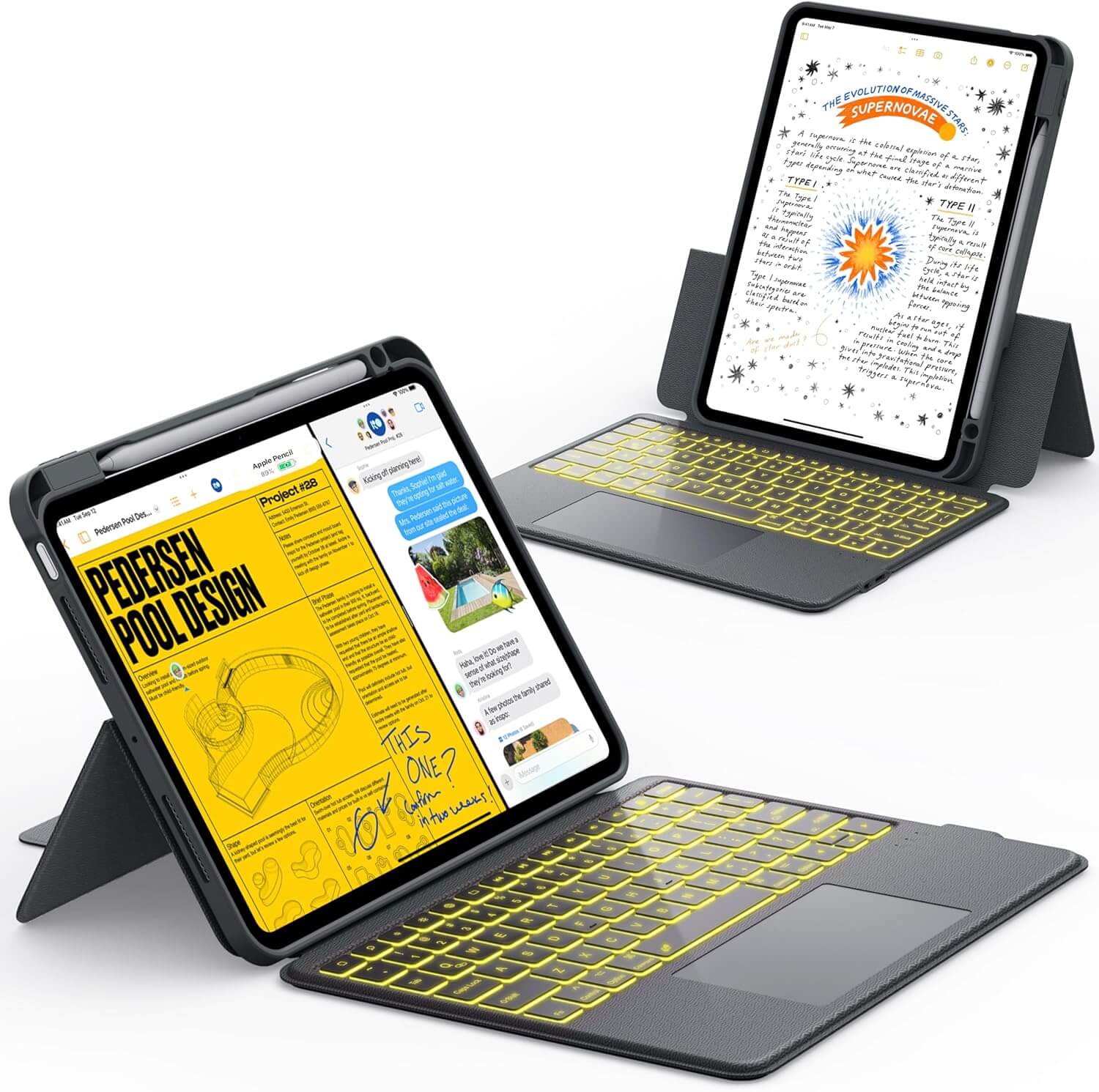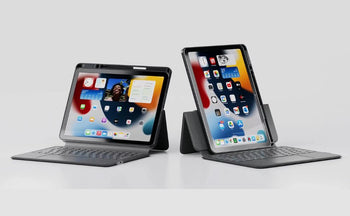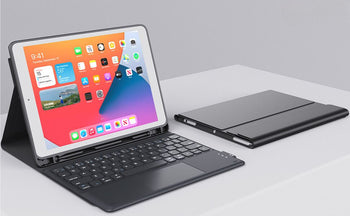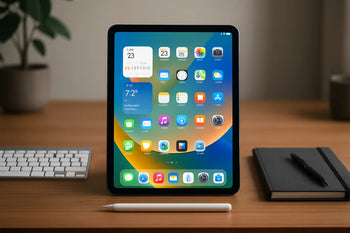So, you've got kids and an iPad. It's a pretty common combo these days, right? And while those tablets can be super handy for a quick break or a long car ride, sometimes it feels like they just take over. If you're starting to worry that your child's screen time is getting a bit out of hand, you're definitely not alone. It's tough to find that balance, but there are some real, practical ways to get things back on track. This article will give you 5 Strategies to Combat iPad Addiction in Kids.
Key Takeaways
- Work with your kids to set rules about iPad use; they're more likely to follow rules they helped make.
- Once you set limits, stick to them, even if it's tough at first. Consistency is key.
- Show your kids how to have a healthy relationship with screens by managing your own device use.
- Use reward charts to encourage good screen habits and celebrate progress.
- Consider using an app like Kidslox to help manage screen time and content on their devices.
1. Set Boundaries Together

Okay, so the first thing you gotta do? Talk to your kids. I know, groundbreaking, right? But seriously, getting them involved in setting the rules makes a huge difference. It's way easier than just dropping the hammer and saying, "No iPad ever again!" (which, let's be honest, isn't gonna work anyway).
Think of it like this: if they help create the rules, they're more likely to, you know, actually follow them. It gives them a sense of ownership and makes them feel like they have some control over the situation. Plus, it's a good chance to teach them about responsibility and compromise.
Here's how you can approach it:
- Have a family meeting: Set aside some time where everyone can sit down and talk without distractions. Turn off the TV, put away your own phone (yes, you too!), and make it clear that everyone's opinion matters.
- Explain why: Don't just say, "The iPad is bad for you!" Explain why you're concerned about their screen time. Talk about the importance of sleep, exercise, and spending time with family and friends. You can even mention how too much screen time can affect their eyes or make it harder to focus in school. You can manage a child's Screen Time settings to help with this.
- Brainstorm together: Ask them what they think is a fair amount of screen time. What times of day are okay for using the iPad? What activities should be off-limits during screen time? Write down all their ideas, even the ones that seem a little crazy.
- Compromise: This is where the magic happens. Look at all the ideas and try to find a middle ground that works for everyone. Maybe they can have an hour of iPad time after they finish their homework, or maybe they can earn extra screen time by doing chores. The key is to find a solution that everyone can live with.
- Write it down: Once you've agreed on the rules, write them down and post them somewhere everyone can see them. This helps to avoid confusion and makes it easier to enforce the rules. You could even create a fun, colorful chart together to make it more engaging.
Setting boundaries together isn't just about limiting screen time; it's about teaching your kids valuable life skills like communication, negotiation, and responsibility. It's an investment in their future, and it can make your life a whole lot easier in the long run.
As you set iPad rules with your kids, consider tools that make screen time more meaningful. The Chesona Keyboard Case for iPad turns their tablet into a learning hub with a detachable keyboard and adjustable stand, ideal for school projects or creative apps you’ve approved.
2. Stay Strong
Okay, so you've laid down the rules. Now comes the hard part: sticking to them. I know, I know, it's easier said than done. Kids are persistent, and sometimes giving in feels like the only way to get some peace. But trust me, consistency is key here.
Giving in, even just once, can undo all your hard work. It sends the message that the rules are negotiable, and your kid will keep pushing those boundaries. Remember those challenging experiences we talked about? They often start with a little slip-up.
Think of it like this: you're training a muscle. Every time you stick to the rules, you're strengthening your resolve. Every time you give in, you're weakening it.
Here's what I've found helpful:
- Prepare for the pushback: Expect whining, bargaining, and maybe even a full-blown tantrum. It's normal. Have a plan for how you'll respond calmly and firmly.
- Remind yourself why you're doing this: It's not about being mean; it's about helping your child develop healthy habits and a balanced lifestyle.
- Find support: Talk to other parents who are going through the same thing. Knowing you're not alone can make a huge difference.
It won't be easy, but it will be worth it. Stay strong, and your child will eventually adjust to the new limits.
3. Set An Example
Okay, this one's tough because it means you have to change too. It's easy to tell your kids to put down their iPads, but what are you doing? Are you glued to your phone all the time? Kids are like little sponges; they soak up everything they see you do. If you're constantly on your devices, they'll think it's normal and acceptable behavior.
It's not about being perfect, but about being mindful. Here's a few things you can try:
- Designate Tech-Free Zones: Make certain areas of the house, like the dinner table, completely screen-free for everyone. This includes you!
- Schedule Digital Detox Time: Set aside specific times each day or week when the whole family disconnects from all devices. Go for a walk, play a board game, or just talk.
- Be Present: When you're with your kids, be actually with them. Put your phone away and give them your full attention. It makes a huge difference.
It's about showing them that there's more to life than screens. It's about modeling the behavior you want to see in them. It's about connecting as a family in ways that don't involve technology. It's not always easy, but it's worth it.
Think about it: if you want your kids to model healthy screen habits, you gotta walk the walk. It's not just about the rules you set for them; it's about the example you set yourself.
4. Reward Charts
Okay, so reward charts. They might sound a little old-school, but honestly, they can be pretty effective, especially with younger kids. The idea is simple: when your child follows the agreed-upon rules about iPad use (or any rules, really), they get a reward. It's all about positive reinforcement.
Think of it like this: you're creating a visual reminder of their progress and a tangible goal to work towards. It's not about bribing them, but about acknowledging their effort and good behavior. Plus, who doesn't love stickers?
Here's how you can make it work:
- Define Clear Goals: Make sure your child knows exactly what they need to do to earn a reward. "No iPad after 7 PM" or "Complete homework before screen time" are good examples.
- Choose Meaningful Rewards: The rewards should be something your child actually wants. It could be extra playtime, a special treat, or even a small toy. Tailor it to their interests.
- Consistency is Key: Stick to the chart! If they earn a reward, give it to them. If they don't, don't cave. Consistency teaches them that their actions have consequences.
I've found that involving my kids in creating the chart itself makes them more invested. Let them pick the stickers, help design the layout, and brainstorm reward ideas. It becomes a collaborative effort, not just something you're imposing on them.
Here's a simple example of how a reward chart could look:
| Task | Monday | Tuesday | Wednesday | Thursday | Friday | Saturday | Sunday |
|---|---|---|---|---|---|---|---|
| No iPad after Dinner | ✅ | ✅ | ❌ | ✅ | ✅ | ✅ | ✅ |
| Homework Before Screen Time | ✅ | ✅ | ✅ | ✅ | ✅ | ✅ | ✅ |
The key is to make it fun and engaging. If it feels like a chore, it won't work. And remember, the goal is to help them develop healthy habits, not just to control their iPad use.
Rewarding your child for smart iPad habits? Make their screen time even more rewarding with the Chesona Keyboard Case for iPad. Its kid-friendly design includes a comfortable keyboard and sturdy stand, perfect for homework, writing stories. Plus, it keeps their iPad safe from drops.
5. Kidslox
Okay, so you've tried setting boundaries, staying strong, and even being a role model. Sometimes, you need a little extra help, and that's where apps like Kidslox come in. I know, I know, more screen time to manage screen time – it sounds counterintuitive, but hear me out.
Kidslox can be a game-changer for managing your child's iPad use. It's not just about blocking apps (though it does that, too!). It's about setting time limits, restricting content, and creating a structure that helps your child develop healthier habits. Think of it as a digital nanny that works even when you're not looking. Plus, with the latest parenting tips available, you're not alone in figuring this out.
Here's why I think it's worth considering:
- Customization: You can tailor the settings to fit your child's age and needs. One-size-fits-all solutions rarely work, especially when it comes to kids.
- Remote Control: Manage their screen time from your own device. No more wrestling over the iPad – just a few taps on your phone, and you're good to go.
- Peace of Mind: Knowing that your child isn't accessing inappropriate content or spending endless hours glued to the screen can significantly reduce your stress levels.
It's not a magic bullet, but it's a tool that can help you regain control and create a more balanced digital environment for your family. Remember, the goal is not to eliminate screen time entirely, but to manage it effectively.
Wrapping Things Up
So, there you have it. Dealing with kids and their iPads can feel like a constant battle, but it doesn't have to be. Remember, it's all about finding a good balance and setting up some clear rules. It might take a little while to get things just right, and you'll probably have to adjust as your kids get older. But sticking with it, being consistent, and showing them other fun things to do will really help. You're not alone in this, and with a bit of effort, you can definitely guide your kids toward a healthier relationship with their screens.
Helping your child balance iPad time? The Chesona Keyboard Case for iPad makes every minute count with a responsive keyboard for typing essays, a secure Apple Pencil holder for creative projects, and a protective design to keep their device safe. It’s a smart way to encourage learning while sticking to your screen time rules.
Frequently Asked Questions
How can I tell if my child is spending too much time on their iPad?
If your child gets upset, throws tantrums, or seems really anxious when their iPad is taken away, it could be a sign of a problem. Also, watch out if they start losing interest in things they used to love, like playing outside or with friends.
Is using an iPad really bad for kids?
Many experts, like Dr. Nicholas Kardaras, believe that too much screen time, especially for young kids, can be harmful. The bright colors and quick rewards on screens can be very exciting for a child's brain, making it hard for them to switch to other activities.
What's the best way to set rules for iPad use?
It's best to work with your child to create rules for iPad use. Let them help decide when and how long they can use it. This makes them feel like they're part of the decision and more likely to follow the rules.
When should kids definitely not use their iPads?
It's a good idea to avoid screen time right before bed and during family meals. Giving their minds a break before sleep can help them rest better. Also, mealtimes are a great chance for family talks without distractions.
Are there any tools to help manage screen time?
Yes, there are apps like Kidslox that can help you set time limits, block certain content, and manage how your child uses their device. These tools can make it easier to stick to your family's screen time rules.
What should we do after screen time is over?
When screen time ends, have something fun planned for your child to do in the real world. This could be a favorite snack, a trip to the park, or playing a game together. This helps them transition away from the screen smoothly.



















